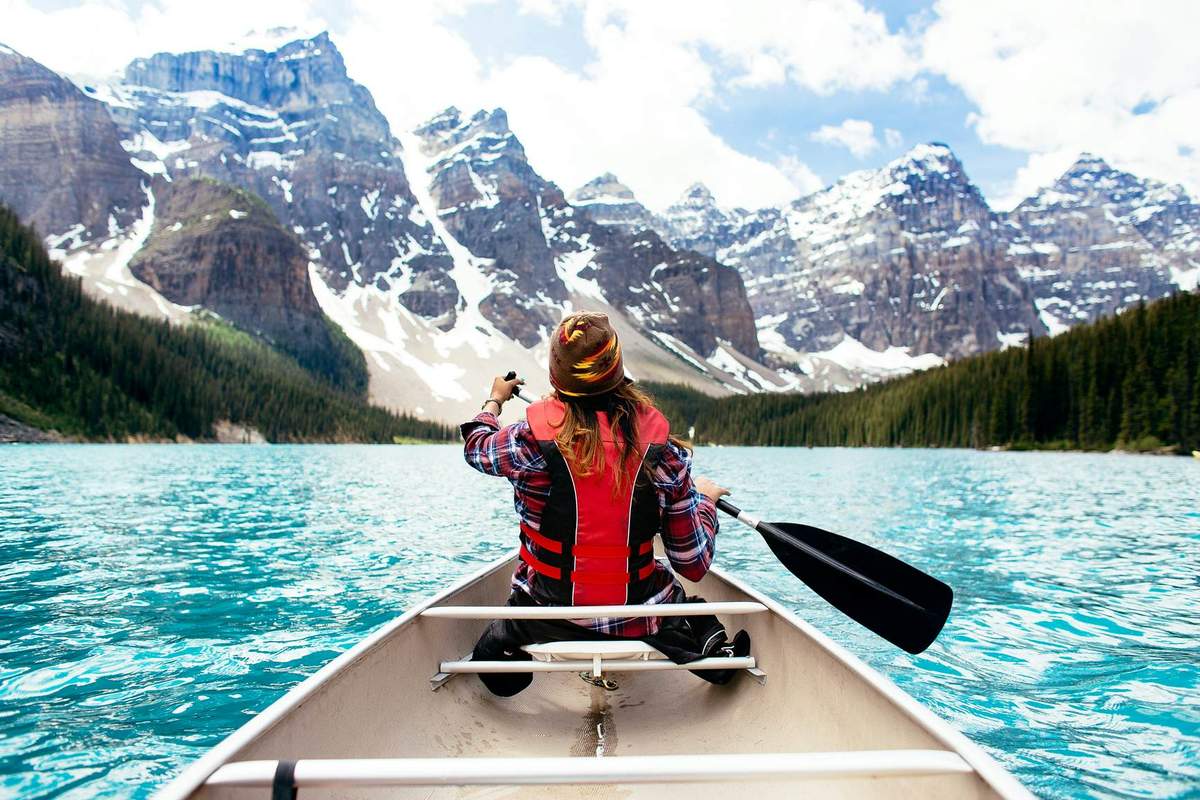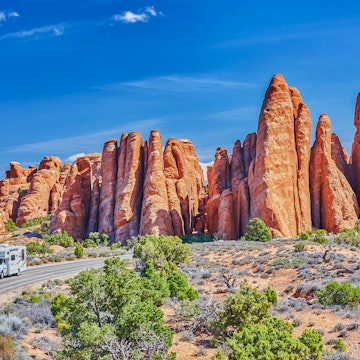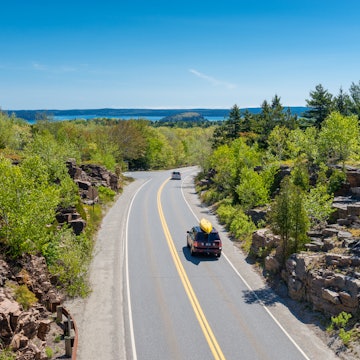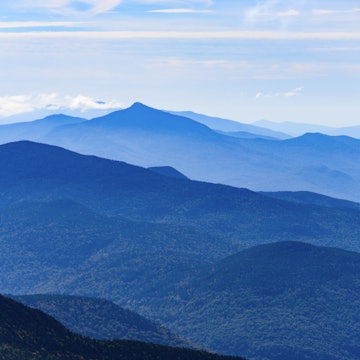
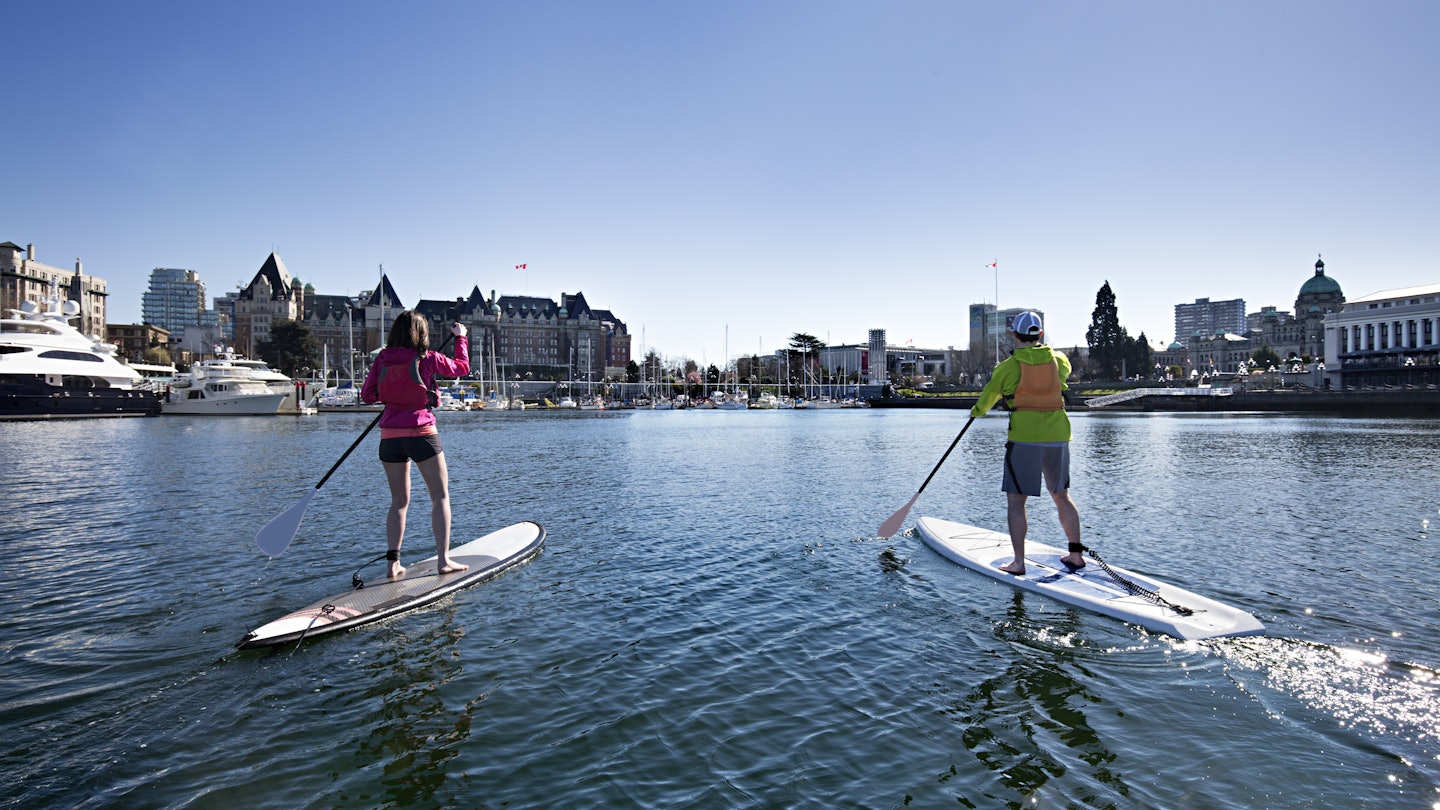
Explore stately Victoria (pictured), hike long-distance trails, catch a wave in Tofino and much more besides on Vancouver Island © Aaron Black / Getty Images RFC
Once dismissed as a sleepy retirement home for aging Anglophiles, Vancouver Island has acquired a racier profile in recent years, courtesy of its free-spirited surfing towns, pastoral wineries, community-built biking networks and extravagantly eccentric accommodations.
If you’ve ever spent time fantasizing about “hanging ten” in Tofino, sleeping in spherical treehouses, visiting Canada’s only commercial tea farm or climbing above the forest canopy on a wooden skywalk, welcome to heaven.
Here's everything you need to know before you visit Vancouver Island for the first time.
When should I go to Vancouver Island?
Most of Vancouver Island has a relatively mild climate. Victoria, in the south, is the balmiest city in Canada, while the nearby Cowichan Valley, famed for its viticulture, is practically Mediterranean. These two areas can be visited year round, although late spring and summer are the driest times. Tofino is another year-round destination with surfing conditions at their best in September and October. The storm-watching season runs from November through February when the winter squalls are spectacular.
Read more: A postcard from Vancouver Island: a storm-watching trip in photos
The months of July, August and September enjoy dry, semi-drought conditions, perfect for east and west coast beaches and long-distance hikes such as the West Coast Trail (open May 1 to September 30). Most of the island’s rain falls between mid-October and April. For Mt Washington skiers, the winter season usually runs from early December to early April.
For the best prices, avoid high summer and public holidays (Canada has one every month). Some of the island’s smaller towns – most notably Tofino – can get very crowded during the school summer holidays (July and August), meaning you’ll need to book accommodations months in advance.
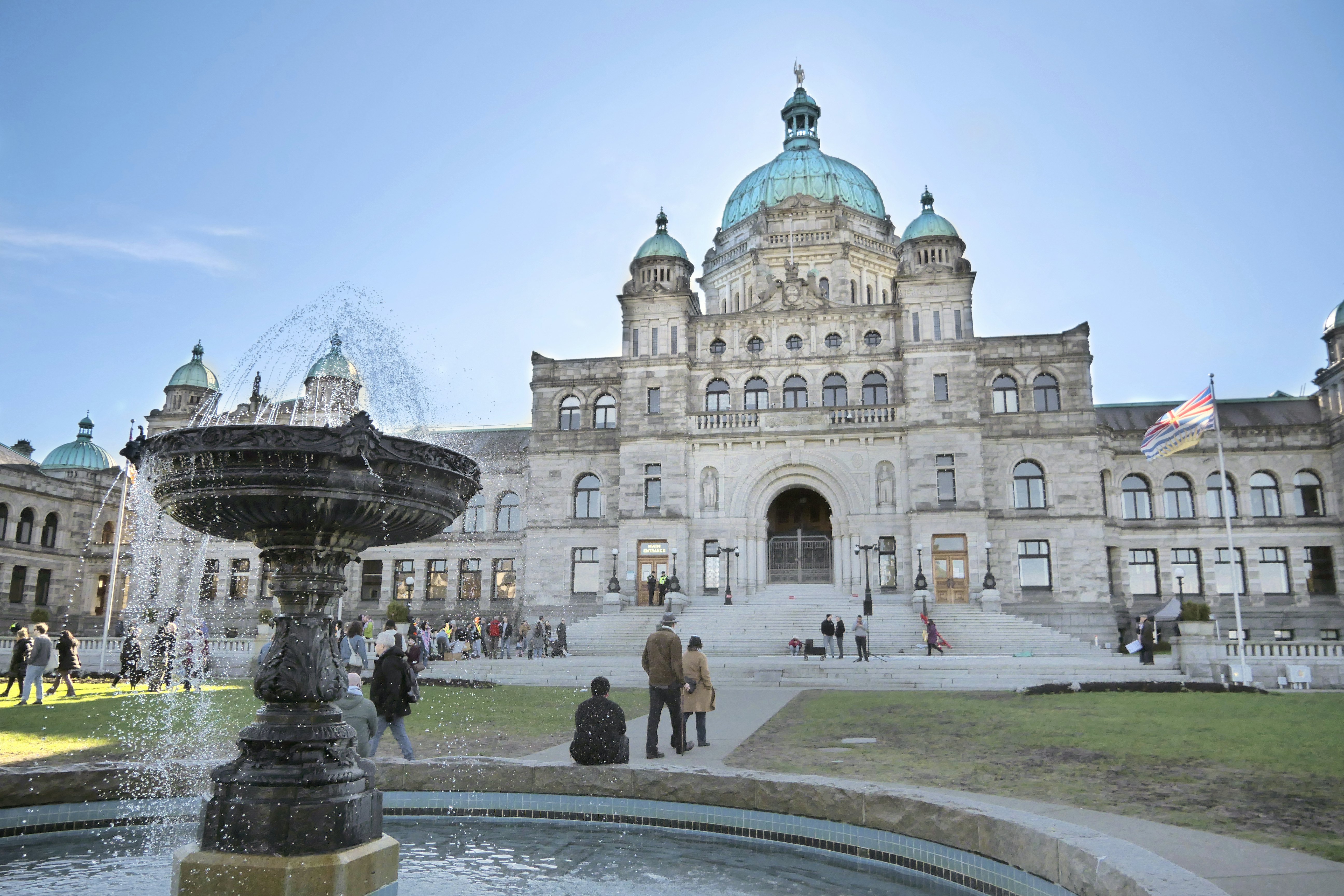
How much time should I spend on Vancouver Island?
Short island breaks from Vancouver can be spread over a long weekend, although once you’ve factored in ferry travel, you probably won’t get much further than Victoria and the Saanich Peninsula. To take in additional highlights, such as the Cowichan Valley and Tofino, bank on at least five days. If you’re aiming to visit the island’s wilder north coast and/or indulge in some backcountry adventures, one week is the bare minimum.
How do I get to Vancouver Island?
The only way to get to the island from the mainland is by ferry or airplane. Victoria International Airport has connections to major Canadian cities, plus Seattle in the US. Small planes serve airports in Port Hardy, Campbell River, Tofino and Nanaimo. Harbour Air runs seaplanes between Vancouver and Victoria harbors.
The main ferry services are run by BC Ferries, which operates vessels between Tsawwassen (Vancouver) and Swartz Bay (for Victoria); Tsawwassen and Duke Point (Nanaimo); and Horseshoe Bay (Vancouver) and Departure Bay (Nanaimo). There’s also a smaller central island ferry that runs between Comox and Powell River on the Sunshine Coast. All Vancouver Island ferries carry cars.
Direct international ferries connect Port Angeles in Washington State, USA, with Victoria. The Black Ball car ferry runs four times a day in either direction in the summer and twice a day in the winter. The journey lasts 90 minutes. The passenger-only Victoria Clipper ferry operates daily between Victoria and Seattle, USA.
Is it easy to get around Vancouver Island?
In short, yes. While the island has a relatively scant road network, especially in the north and west, the main highways are in good condition and a car will get you to most places that are of interest to travelers.
The island’s main north-south highway runs between Victoria and Port Hardy – a total distance of 500km (311 miles). It’s called Hwy 1 (the Trans-Canada Highway) between Victoria and Nanaimo and Hwy 19 further north.
Vancouver Island Connector has one daily bus in either direction between Victoria and Tofino, stopping at Nanaimo, Port Alberni and several other towns. Island Link offers a more comprehensive service running multiple buses between Victoria and Tofino, Victoria and Campbell River, and Campbell River and Port Hardy. Book at least a day in advance.
There are currently no public trains operating on the island.

Top things to do on Vancouver Island
Surf or storm-watch in Tofino
Abutting the turbulent seas of the Pacific Ocean with a necklace of broad sandy beaches, Tofino is, inarguably, the best place in Canada to go surfing. From semicircular Cox Bay (host of numerous surfing competitions) to blustery Long Beach inside Pacific Rim National Park Reserve, the swells are legendary – and not just for their wave-riding potential. Backed by a smattering of low-rise accommodations, Tofino has become a popular storm-watching destination in recent decades, with its winter tempests perfectly complementing the elemental surroundings.
Sit down to afternoon tea in Victoria
While Victoria is an increasingly diverse city, it still clings in part to the British traditions of its past, a legacy reflected in its grand legislative building, “royal” museum and local penchant for afternoon tea. The tea ritual prevails in an array of refined cafes and tearooms scattered around town, where fluffy scones and dainty cakes are paired with refreshing cups of orange pekoe sipped from fine china.
The poshest – and also most expensive – place to partake in the repast is the Fairmont Empress Hotel, where “high tea” (finger sandwiches, homemade pastries and fresh scones) is served in a regal lounge.
Visit a cidery in the Cowichan Valley
The Cowichan Valley is Vancouver Island’s own Provence, where gentle hills and a warm Mediterranean-like climate provide a fertile environment for vineyards, farm-to-table restaurants and craft drinks. A notable innovator is Merridale, a craft-cider maker and microdistillery in the farming community of Cobble Hill, whose rustic grounds are speckled with a gnarly orchard and large, gabled barns. Inside, there’s a tasting bar dispatching samples of the fruity booze, a patio bistro serving crusty apple pie and posh yurts for overnight stays.
Feel the full force of nature on the West Coast Trail
Muddy, swampy and slow-going for much of its course, the perennially popular West Coast Trail is one of Canada’s most celebrated hikes. The 75km (47-mile) trail of ladders, bridges, creek crossings, rock-hopping and beachcombing hugs the Pacific shoreline for most of its course and incorporates large tracts of Indigenous land. You’ll need a permit, camping equipment and between five and seven days to complete it, but despite fickle weather and the ruggedness of the beaches and adjacent forest, the rewards are immense. Book your passage well in advance.
See one of Canada’s best Indigenous cultural museums in Alert Bay
Head north to Alert Bay on tiny Cormorant Island to see one of the best manifestations of Indigenous culture in Canada. The U’mista Cultural Centre is a unique museum modeled on a wooden longhouse that displays a vast collection of Kwakwaka'wakw artifacts – including masks, carvings and totems – reclaimed after being confiscated by Canadian authorities in the early 20th century, when potlatch gift-giving ceremonies were prohibited.
Climb above the forest on the Malahat Skywalk
Opened in 2021 and built in collaboration with the Malahat Nation, this novel Skywalk rises like a giant wood-and-glass basket above the forest just off Hwy 1, 30km (19 miles) northwest of Victoria. A 600m-long (1969ft) elevated walkway leads through arbutus forest to the 32m-high (105ft) multi-tiered tower that's been fitted with multiple viewpoints, a bouncy adventure net and a helter-skelter-style slide that’ll shoot you back down to the bottom in 15 seconds.
Looking for more great experiences? Here are our top picks on Vancouver Island

My favorite thing to do on Vancouver Island
I’m no daredevil mountain biker, but the extensive and unique trail network around the central-island village of Cumberland is my favorite place for downhill practice (and boy do I need it). The trails were built by a local nonprofit called the United Riders of Cumberland in the early 2000s with the cooperation of Canadian timber companies. Around the same time, an enterprising group of village residents purchased an adjacent portion of old growth forest to save it from logging and furnished it with walking trails.
To support the two-wheeled and two-legged tourists, Cumberland’s once downbeat main street of mining-era buildings has sprouted a cool array of independent shops and restaurants. Last time I was in town, I stayed at the Riding Fool, a friendly hostel with bike rentals available at the adjacent Dodge City Cycles.
How much money do I need for Vancouver Island?
Prices on the island mostly reflect those of mainland British Columbia (BC) and the rest of Canada. Travelers from the US, Eurozone and the UK may find things slightly cheaper than at home.
How much money you’ll need will depend on the season, your location and your choice of activities. Hit tiny Tofino in the summer for whale-watching and a dinner of baked halibut washed down with a bottle of Muscadet and things could get pricey. But visit nearby Ucluelet in the shoulder season to sample beer in the local brewpub and hike the elemental Wild Pacific Trail for free, and you’ll have some cash left in the coffers.
If you’re just visiting the Victoria area, you can stretch your budget by ditching the car (meaning no parking fees), traveling “walk-on” with the ferry and taking the cheap public bus from the Swartz Bay ferry terminal into Victoria.
Typical prices:
Ferry fares for cars/walk-on passengers: from C$50/19.85
Front-country camping per night: C$20–35
Backcountry camping: C$5
Room for two in mid-range hotel: C$180–240
Kayak rental (two hours): from C$50
Victoria–Tofino bus ticket: C$73
Local bus fares: C$2.50
Coffee: C$3–5
Fish ‘n’ chips: C$16–22

Are there any wild animals?
There are plenty. Zodiac boats leave direct from Victoria’s Inner Harbour on whale-watching excursions year round. Tofino and Telegraph Cove are also known for their wildlife cruises, and sightings of dolphins, otters and whales are common. Prince of Whales is the best island operator.
Black bears are present across Vancouver Island and are regularly spotted on popular wooded hikes such as the West Coast and Juan de Fuca trails. There are no grizzly bears on the island itself, but boat trips operated by Tide Rip run during summer from Telegraph Cove to Knight Inlet on the mainland, where grizzlies are relatively common.
Unbeknownst to many, the island has the highest concentration of cougars in North America.
What's the bike culture like?
Vancouver Island is one of the most bike-friendly places in Canada. Urban Victoria has a large and growing network of dedicated bike lanes that crisscross the downtown core and complement a wider web of multi-use trails, including the 55km (34-mile) Galloping Goose Trail and the 29km (18-mile) Lochside Trail, both of which are built on top of old railway lines. Further north, the twin surf towns of Tofino and Ucluelet are linked by the newer ʔapsčiik t̓ašii (pronounced “ups-cheek ta-shee”) trail that passes all the best Pacific beaches.
For off-road action, Cumberland has one of the most comprehensive single-track mountain biking networks in BC, with 170 named trails and a strong reputation among cyclists for its diversity and competitive edge.
How English is Victoria?
Victoria isn't as English as it used to be, but you can still enjoy several genuine British-style pubs in the BC capital, including such downtown haunts as The Sticky Wicket (with a cricketing theme), where the menu still lists bangers and mash.
Craigdarroch Castle is a grand neo-Romanesque mansion that once belonged to a British coal baron. It wouldn’t look out of place in the Scottish Highlands.
Fish ‘n’ chips is a local staple, and authentic versions can be procured at the floating food shacks of Fisherman’s Wharf. Afternoon tea is also popular – Murchies Tea & Coffee on Government St does a cheap version.
Look out for games of cricket in Beacon Hill Park in the summer and don’t miss the world-class floral displays at Butchart Gardens in nearby Brentwood Bay.

What are the best long-distance hiking trails?
The island has three multiday backcountry hiking trails, all regarded as classics.
The West Coast Trail is world famous and was once used as a rescue route for shipwrecked sailors. It’s open from May to September, and aspiring hikers must book in advance to secure a space.
The 47km (29-mile) Juan de Fuca Trail is a lesser-known southern extension of the West Coast Trail with no prior reservations necessary.
The newer, more remote 43km (27-mile) North Coast Trail links sandy coves, empty beaches and thick, wind-contorted rainforest via a rough, unkempt path that utilizes sections of boardwalk and cable cars to cross creeks and rivers.
The all-encompassing Vancouver Island Trail runs south to north from Victoria to Cape Scott, though it still lacks proper signage in some places. See the trail website for details.
Are there any national parks?
There are two national parks on Vancouver Island: Pacific Rim National Park Reserve, established in 1970, and Gulf Islands National Park Reserve, designated in 2003. The former abuts the stormy west coast between the twin surf towns of Tofino and Ucluelet and is split into three sections: the West Coast Trail (a hiking route), Broken Group Islands (only reachable by boat) and the more accessible Long Beach Unit, where there’s a visitor center and a raft of beach activities.
The Gulf Island National Park Reserve consists of numerous disconnected areas spread across a dozen landfalls on the so-called Gulf Island archipelago between Vancouver and Victoria. Pender and Mayne Islands are the easiest to reach on the public ferry network.






